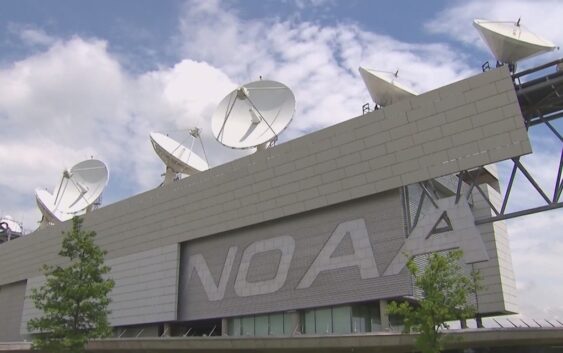- Why no hurricanes made landfall in the US in 2025
- Florence to begin interviewing police chief finalists in January
- A West Texas county wants to better prepare for floods. Paying for it will be tricky.
- They couldn’t save their daughters’ lives in the July 4 floods. Now they’re dealing with the grief and the guilt.
- Austin could see heavy rains, possible flooding over the next few days
Lawmaker sounds the alarm on NOAA and NWS cuts as hurricane season approaches

Panelists expressed serious concerns over the nation’s storm readiness in the wake of the widespread federal job cuts.
HOUSTON — With just 10 days left until the official start of hurricane season, Rep. Lizzie Fletcher is sounding the alarm about growing staffing and resource shortfalls at the very agencies responsible for issuing life-saving storm warnings.
On Wednesday, Fletcher hosted a live webinar with top weather and emergency experts to spotlight how federal budget cuts, a hiring freeze and a wave of forced retirements are impacting the National Weather Service (NWS) and NOAA — the National Oceanic and Atmospheric Administration.
Among the panelists were former NOAA Administrator Dr. Rick Spinrad, Space City Weather meteorologist Eric Berger and Harris County Emergency Management Coordinator Mark Sloan. All three expressed serious concerns over the nation’s storm readiness.
According to Dr. Spinrad, the NWS is currently operating with 30% fewer staff than normal. That includes approximately 500 employees lost to early or forced retirements and another 700 vacancies left unfilled due to a federal hiring freeze.
Spinrad also noted that 30 of the 122 NWS forecast offices across the country currently have no meteorologist in charge, including the League City office, which serves the Greater Houston area. That office alone is missing nearly half of its forecast staff.
He went on to say fewer meteorologists means fewer radar technicians, fewer weather balloons and less atmospheric data to track developing storms — ultimately leading to wider margins of error in forecasting.
“This year, because we have fewer people and a higher probability of not being able to collect the data, what will happen, I believe, we will see degraded quality forecasts,” said Dr. Rick Spinrad. “They will most likely still be delivered on time, but the error bar — the cone of uncertainty — and the track forecast and intensity forecast will have to be larger.”
That larger “cone of uncertainty,” he said, means more guesswork in determining where a storm might make landfall, which could delay critical decisions such as evacuations or flood preparations.
Locally, Mark Sloan with Harris County Emergency Management said his office remains committed to issuing timely alerts and warnings — and that he’s been in close contact with the local NWS office, which has pledged to bring in extra staff from other cities if necessary.
But Sloan cautioned that shifting resources from one location to another could create new vulnerabilities.
“Doing more with less has never worked,” Sloan said.
As forecasters brace for a potentially active hurricane season, emergency leaders say now is the time for the public to stay informed — and for the federal government to reinvest in the systems that help keep communities safe.